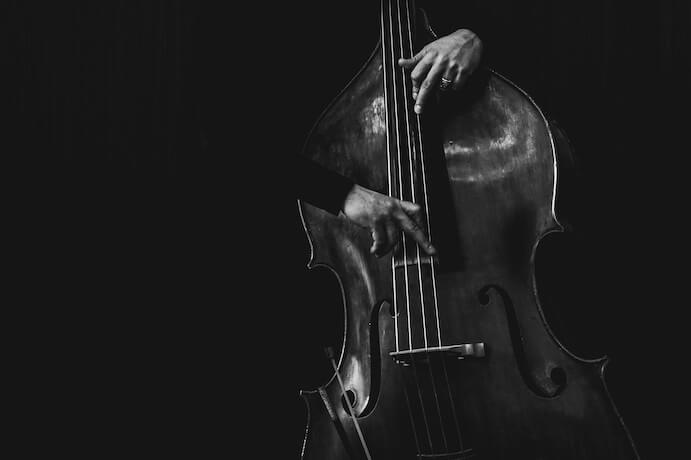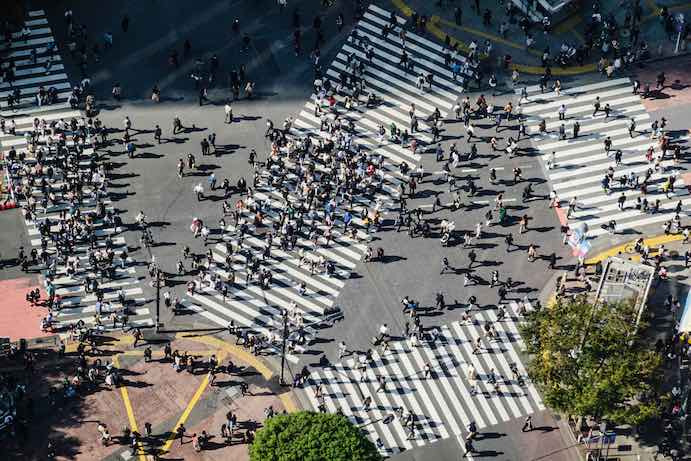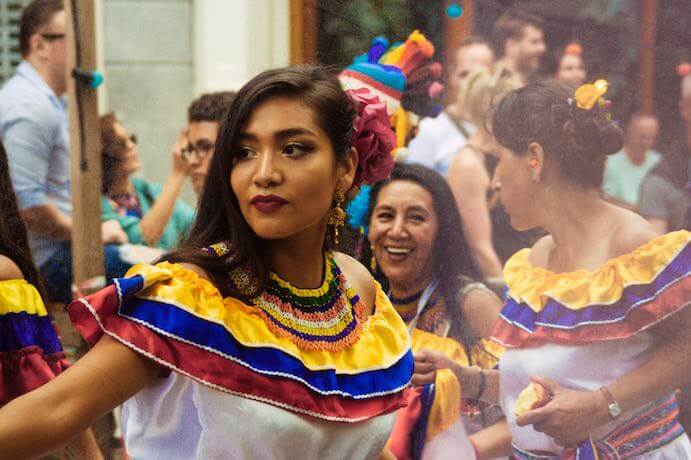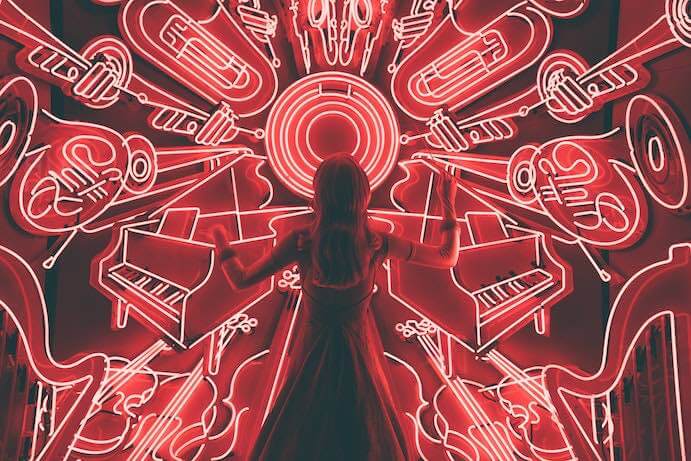“Out of Context” is a 10-part series that addresses the topic of cultural appropriation as it intersects with both Western European-based classical music and the broader social landscape. Commissioned by American Composers Forum and I CARE IF YOU LISTEN, the goal of the series is to offer information and diverse perspectives to those seeking to acknowledge historical context, honor cultural traditions that are not their own, and expand their sphere of knowledge with awareness and respect. A culminating collection of these articles and other resources will be shared for continued learning and dialogue.
As an artist, you can technically do anything you want to do. You can listen to what you want to listen to, and write what you want to write. You should surround yourself with the things that you love! Life is too short to deny yourself the art and community that deeply resonate with you—but this is not a free pass to live without creative consequence.
Cultural appropriation isn’t principally about aesthetic or authenticity, though these are still important ingredients. Cultural appropriation is about power. Those in power find themselves defending artificially inflated privileges that are frequently confused with rights, while those without power find themselves defending rights that are forcibly classified as privileges.
As artists, presenters, and administrators, how can we facilitate the healthy exchange of diverse artistic ideas without infringing on the rights of others? Why does it matter if we do?
Keeping Score
Martin Luther King Jr. said, “The arc of the moral universe is long, but it bends toward justice.” However, this doesn’t mean that justice is achieved on autopilot. According to The Institute for Policy Studies, households of color will reach majority status by 2043, yet the median white family today has $116k in assets compared to the median Latino family’s $2k and the median Black family’s $1.7k (which is on track to have zero by 2053). Black and Hispanic children are five and eight times as likely, respectively, as white children to be hospitalized for COVID-19. The total number of orchestral players of color combined at elite institutions amounts to less than 15%.
The societal disparities are indisputable, and the arts are only a piece of the puzzle, but it’s easy to measure theft of power because we have a great scorecard: money. While all of us have the right to express ourselves artistically, only a few have the privilege of financial success.
Where there is money to be made, there is a culture ripe for exploitation. For example, The Indian Arts and Crafts Act of 1990 “…prohibits misrepresentation in the marketing of Indian arts and crafts products within the United States.” Yet in 2011, Urban Outfitters had an entire Navajo line of clothing and accessories, including a “Navajo Hipster Panty.” Fashion isn’t legally considered art, and Urban Outfitters exploited that loophole. In order to bring this blatant case of cultural appropriation to court, Navajo Nation had to trademark the word “Navajo.”
Music is legally considered art, yet it is intangible and murky, so ultimately, we must learn to monitor ourselves.

Photo by Don Agnello on Unsplash
Post-Colorblind
In Stamped from the Beginning, Ibram X. Kendi challenges us, “When you truly believe that the racial groups are equal, then you also believe that racial disparities must be the result of racial discrimination.” The latter part of the 20th century was supposed to usher in a post-racial, colorblind society. We are instead living in a post-colorblind society. This is actually a good thing, as Michelle Alexander writes in The New Jim Crow: “Seeing race is not the problem. Refusing to care for the people we see is the problem.”
Today, white artists disproportionately benefit from the very large body of white art and the white gatekeepers that facilitate it, all while subscribing to the myth of the composer genius. BIPOC artists, on the other hand, are often consciously or subconsciously compared to their peers who look like them (especially when that comparison is unflattering), no matter their artistic output—part of what Kendi calls “individualizing White negativity and generalizing Black negativity.”
But one’s blood has nothing to do with artistic ability, and any notion that blood alone bestows special gifts or advantages is simply wrong. Composer and scholar George Lewis defines “Afrological” and “Eurological” systems of improvisation as “historically emergent rather than ethnically essential.” Community preserves culture, not genetics. When we recognize that culture isn’t some magical gift that is uploaded into one’s DNA, we can begin to understand the real work that has gone into cultivating an artistic practice.

Photo by Miti on Unsplash
We are seeing a resurgence of cross-generational communication with artistic ancestors and the acknowledgement of source material as a strength, not a burden. So many living artists do this proudly, from Nathalie Joachim’s Fanm d’Ayiti to Gabriela Lena Frank’s Leyendas to Reena Esmail’s Jhula Jhule. A shallow observer might simply think that these artists are “allowed” to write this music because of their lineage, but if you read interviews by any of them, you will find a lifetime of investment (travel, language, practice) in these respective cultures in addition to others.
The Invisible Crossing Guard
This brings us to one of the main problems with cultural appropriation: it is possible for artists of privilege to genuinely master a skill from another culture without context, which is compounded by the fact that one’s odds of financial success have a lot to do with the racial privilege of being white (and male, and cisgender, etc.).
But we have a dilemma: should we all strive to be artists of privilege, creating without consequence, or should we strive to remove the privilege that has separated us for so long?
Think of crossing the street–you cannot carelessly walk down the middle of the road without risking a collision, so you use sidewalks, crosswalks, and bridges. You learn to wait and cooperate with others. Artists of privilege (frequently white and male, but not always) are like jaywalkers with an invisible crossing guard that brings vehicles to a screeching halt every time they wander into traffic, oblivious to the wreckage. Though it was not their choice to be born with this invisible privilege, it is their choice to continue to use it once it has been revealed. When someone unfairly brings traffic to a halt, they are interrupting others, which is at best rude and at worst life threatening. Like pandemic anti-maskers, it’s all too easy to defend the “right” to personal freedom when the consequences aren’t immediate, but the privilege of ignoring them makes them no less real.

Photo by Ryoji Iwata on Unsplash
Critically acclaimed exploitative art is often justified by colorblindness. Quentin Tarantino is one of Hollywood’s most iconic filmmakers, yet he refuses to acknowledge his complicity in cultural appropriation because it implies that he cannot tell every story authentically, that he was born with limitations. When criticized by Spike Lee for his portrayal of Black characters and culture, Tarantino revealingly said:
“As a writer, I demand the right to write any character in the world that I want to write. I demand the right to be them, I demand the right to think them, and I demand the right to tell the truth as I see they are.”
Tarantino, like Silicon Valley, didn’t invent the “move fast and break stuff” ethos, but he did benefit from the privileged class’ ability to make a mess without consequence. Frustratingly, Tarantino more recently mused, “It’s been a long time since the subject of a writer’s skin was mentioned as often as mine…”
What are we to do?
As Lauren Michele Jackson writes so perfectly in White Negroes, “Appropriation, for better and worse, cannot stop. So long as peoples interact with other peoples, by choice or by force, cultures will intersect and mingle and graft onto each other.”
If cultures will inevitably mingle and we are determined to participate, then how should we proceed? The answer is simple: with great care.

Photo by Raymond Teeuw on Unsplash
We artists should be asking ourselves deep questions and preparing for difficult answers. We should embrace the creative process and the consequences that follow. We should be curious, but we should also strive to be better stewards of the art forms that bring us so much joy by acknowledging our limitations in understanding and access before investing time and effort.
Though not definitive, I am happy to share a few tips (inspired by Ijeoma Oluo’s talking points):
- Your ears are a wonderful gift. Give them to others generously and frequently. Elevate BIPOC artists in conversation, teaching, or presenting work. Do this without the expectation of creating.
- Invest money in the art forms you love whenever possible. Pay to go to performances and pay teachers to pass on their knowledge. Buying art/music/food that you love is different than profiting off of it.
- After you’ve mastered a technique, spend time mastering the context for it.
- For presenters: Never assume to know anybody’s art-making practice based on appearances. Allow BIPOC artists to choose their tools, subject, and medium. Bonus: don’t treat artists as interchangeable. Don’t use the word BIPOC when you mean Black, for example.
- Remember that culture is holistic – learning the music without also learning community building, language skills, social structures, cuisine, etc. is disingenuous.
- Give clear credit to teachers and collaborators. You might know where you learned something, but others don’t.
- When criticized for cultural appropriation, don’t center yourself. Instead, spend time listening and learning. Your intent doesn’t take away real hurt.
- Identify those who are displaced by you, either as an artist or an administrator, and actively invite them to hold positions of leadership, not subordination.




















